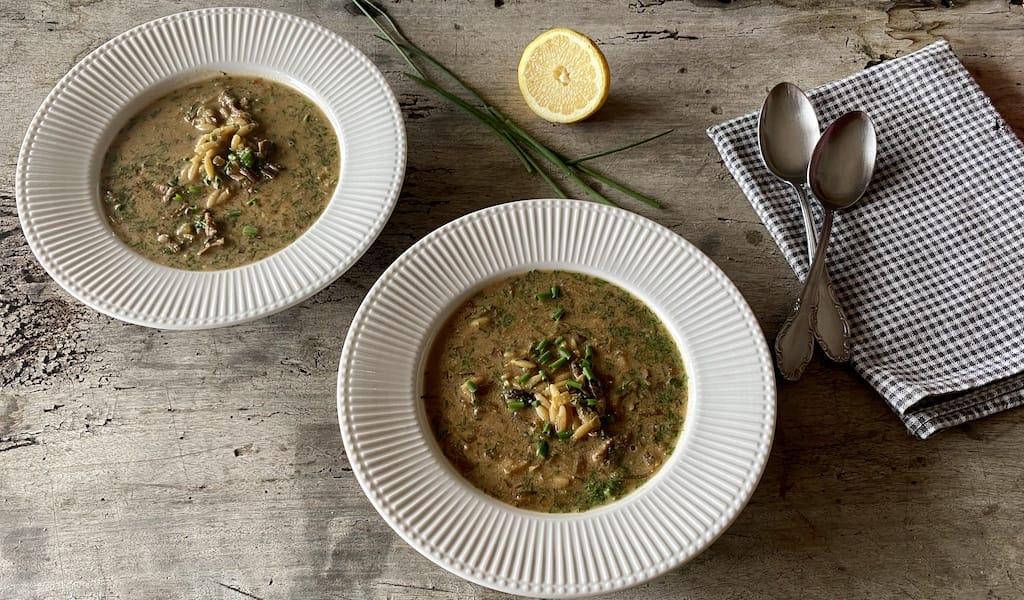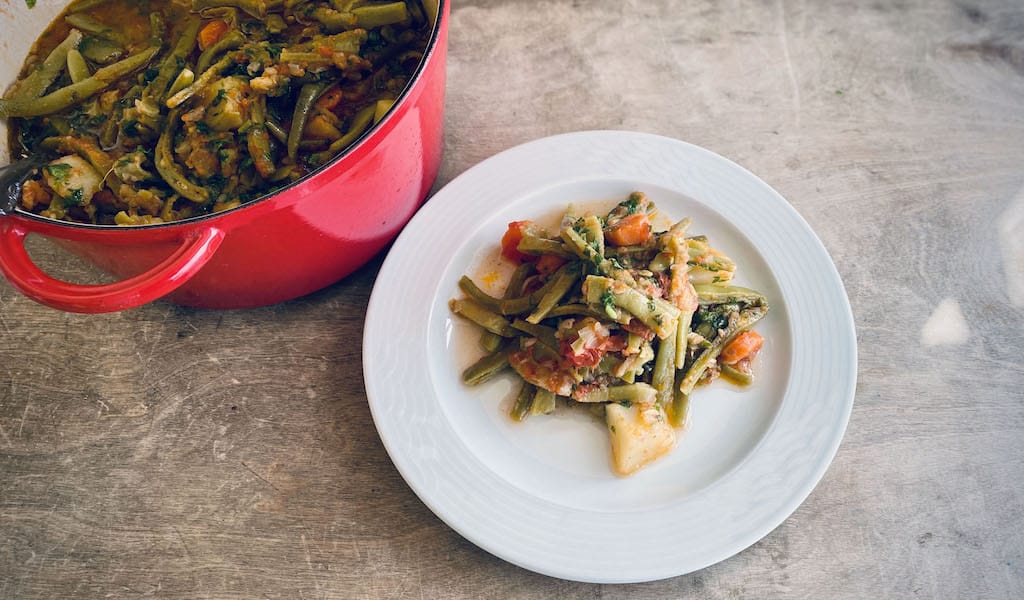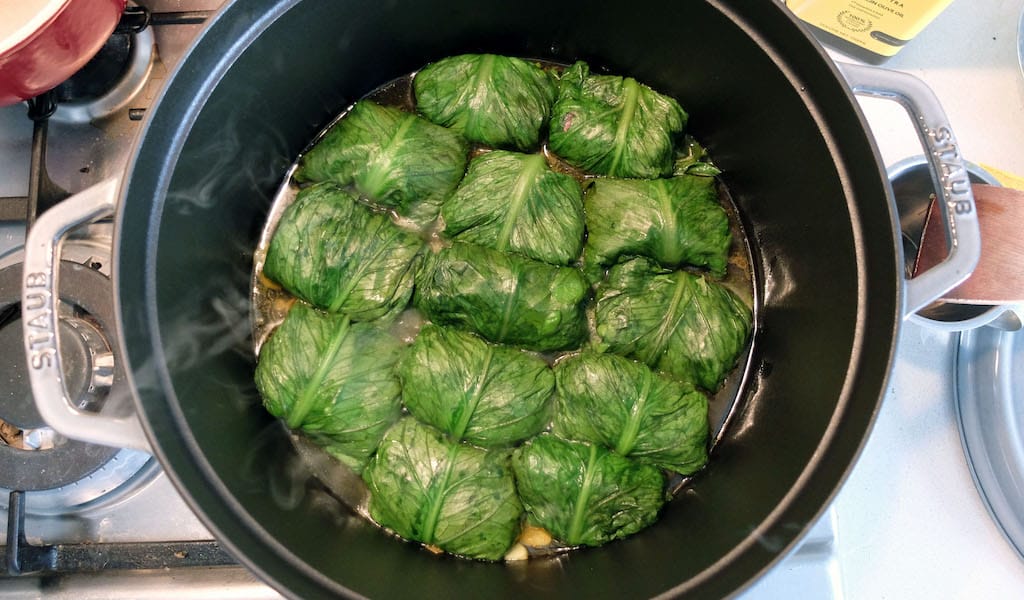Megali Sarakosti (Μεγάλη Σαρακοστή) is the 40-day period of Lent before Greek Easter, running from “Clean Monday” to Easter Sunday. The fasting rules prohibit consumption of any kind of meat or animal-derived products like dairy and eggs. Fish is not allowed either (with a few exceptions), but bloodless seafood like crustaceans, shellfish, fish roe, calamari and octopus are fair game.
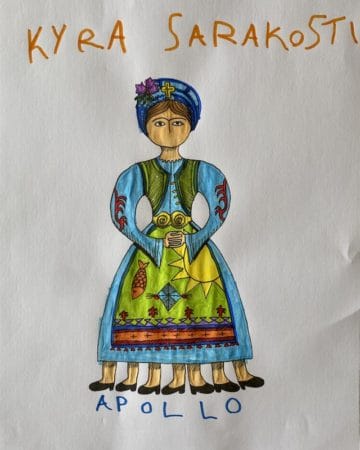 What always fascinated me is the fact that in Greek folk tradition, Sarakosti is personified as a woman, named Kyra Sarakosti (Mrs. Sarakosti), often made out of paper (still a common activity in schools – my son Apollo loves drawing her!), but also sometimes out of felt or even a basic dough. She wears a long dress carrying a cross on her head, or sometimes hanging from her neck, hands crossed as in a prayer position, and no mouth (often no nose either), so as to prevent her from tasting or even smelling food, temptations that may lead her to break her fast. Below her dress hang seven little feet, one for each week of Sarakosti; each Saturday, one of her feet is cut off – back in the day, the fasting period seemed so long that people made this simple DIY calendar to track the time remaining until Easter.
What always fascinated me is the fact that in Greek folk tradition, Sarakosti is personified as a woman, named Kyra Sarakosti (Mrs. Sarakosti), often made out of paper (still a common activity in schools – my son Apollo loves drawing her!), but also sometimes out of felt or even a basic dough. She wears a long dress carrying a cross on her head, or sometimes hanging from her neck, hands crossed as in a prayer position, and no mouth (often no nose either), so as to prevent her from tasting or even smelling food, temptations that may lead her to break her fast. Below her dress hang seven little feet, one for each week of Sarakosti; each Saturday, one of her feet is cut off – back in the day, the fasting period seemed so long that people made this simple DIY calendar to track the time remaining until Easter.
The idea behind fasting, however, is far more spiritual than just avoiding food: It is about the general abstention from physical pleasures in order to prepare, body and mind alike, to enter into a higher state of spiritual being and prayer. In that way, fasting in all its forms is a personal choice.
Nowadays, people most commonly choose to fast during the Holy Week or a couple of days before Easter as opposed to the entire Lenten period. At monasteries and convents, however, fasting is understandably taken quite seriously during Lent and throughout the year – this has resulted in a Greek monastery cuisine that I consider to be the essential Mediterranean “veganism,” with hundreds of recipes that are rooted in antiquity and celebrate seasonal produce and humble ingredients.
One common Lent dish that is often prepared in monasteries is tahinosoupa (ταχινόσουπα), tahini soup, which is both nutritious and fills you up. (Although the foods of Lent are not meant to offer pleasure, I must admit that I love many of them, this soup included.) It’s often made on stricter fasting days, when even olive oil and wine are forbidden.
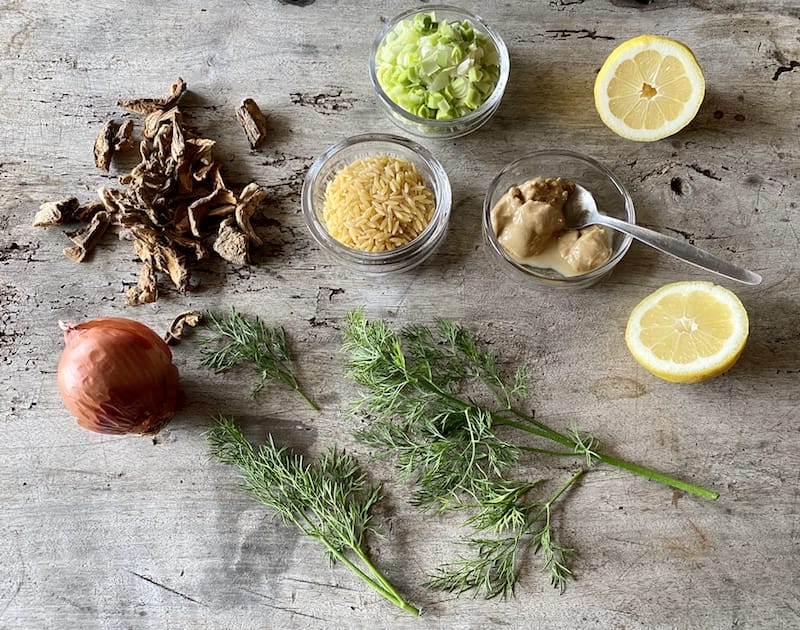
One of those days is Good Friday, the day that commemorates the death of Christ, his coming down from the Cross, and the placement of his body in the tomb. It’s a day of mourning, silence and strict fasting. In many parts of Greece it was tradition on Good Friday for people to drink water with vinegar (some added ashes in it too) to honor Christ, who was given vinegar to drink while on the Cross. Others eat boiled pulses or vegetables with just vinegar and no olive oil at all. I have vivid memories of my grandmother eating tahinosoupa.
It’s typically made by boiling either white rice (a variety appropriate for soups), a type of small shaped pasta like orzo or cracked wheat. After the pasta or rice is cooked through, you serve it hot as a soup in a bowl and add in tahini, stirring to dissolve and adding enough hot cooking water to acquire the right consistency. This is served with fresh lemon juice and ground black pepper, which is optional.
There are several variations on this simple recipe. For instance, a bit of tomato, or mushrooms with herbs are often added in the soup, or a variety of other vegetables like a combination of carrot, potato and celeriac, which are pureed for a velvety result.
The version I’m sharing is one that I adapted from a monastery recipe from Agion Oros (Mount Athos) and primarily features mushrooms. The typical recipe would boil the mushrooms, onions and dill, and directly add in the orzo or rice. I have added a few more flavors to make it pleasurable for any occasion and not just for Lent (although it still follows the Lenten dietary rules). I use a vegetable broth instead of water, and I made it with dried porcini mushrooms, but other types of mushrooms or a mix of either fresh or dried, will also work great.
Recipe: Porcini Mushroom Tahinosoupa, or Tahini Soup
20 gr porcini mushrooms
1 onion, chopped
1 leek, chopped (green part too)
1 garlic clove, chopped
1 tbsp sunflower oil
1.3 liter hot vegetable broth
80 gr orzo
60 gr tahini
40 ml lemon juice
4 tbsp chopped dill
1 tbsp chopped chives to serve
Salt
Freshly ground black pepper
Place the porcini mushrooms in a bowl and cover with hot water. Let soak for 20 minutes. Strain but keep the water.
Place a large saucepan on medium high heat. Add in the sunflower oil and once hot, sauté the onion and leek, stirring, until soft and glossy. Add the mushrooms and garlic and stir for another minute. Pour in the mushroom liquid and hot vegetable broth. Bring to a boil, then lower heat to medium low and add salt to taste. Cover and let simmer for 30 minutes.

Bring heat up again to medium high and when it is boiling add in the orzo. Boil for about 7-8 minutes until the orzo is cooked. Remove from heat. In a separate bowl or pitcher add the tahini and lemon juice and whisk. It will be very thick. Add in some of the hot soup into the tahini – a couple of ladles each time – while whisking gently. The tahini should all dissolve well and the mix should gently warm up from the soup liquid.
Pour the tahini into the soup, mix and add in the chopped dill as well. Serve and add black pepper and chopped chives on top.
To convert metric measurements to US and British kitchen units, click here.
 April 21, 2021 Recipe
April 21, 2021 Recipe
Vegetable main dishes abound in Greek cuisine. Those cooked in olive oil on the stovetop […] Posted in Athens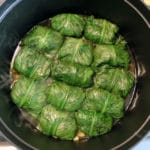 March 24, 2021 Recipe
March 24, 2021 Recipe
On March 27 of this year, Monique and Josef, the Moroccan-born couple that own […] Posted in Marseille February 24, 2021 Recipe
February 24, 2021 Recipe
This is the season when almond trees blossom in Greece. They usually begin blooming in […] Posted in Athens
Published on March 30, 2021
Related stories
April 21, 2021
AthensVegetable main dishes abound in Greek cuisine. Those cooked in olive oil on the stovetop fall under the broader category of ladera (ladi means “olive oil”). They feature seasonal vegetables – usually one main vegetable is the star of each dish, with others adding flavor and color. In the lead-up to Easter – when there…
March 24, 2021
MarseilleOn March 27 of this year, Monique and Josef, the Moroccan-born couple that own Patisserie Avyel, plan to roast a turmeric-coated lamb shoulder above a bed of onions. My friend Judith, whose family hails from Algeria’s Tlemcen region, will blend almonds and raisins into mlosia, a thick jam. And, in my apartment, I will simmer…
February 24, 2021
AthensThis is the season when almond trees blossom in Greece. They usually begin blooming in January, unless the winter is colder than normal, in which case you start seeing the flowers later, in mid-February. The dreamy white-pink blossoms resemble those of the cherry tree and can be found in abundance in most parts of Greece,…







































